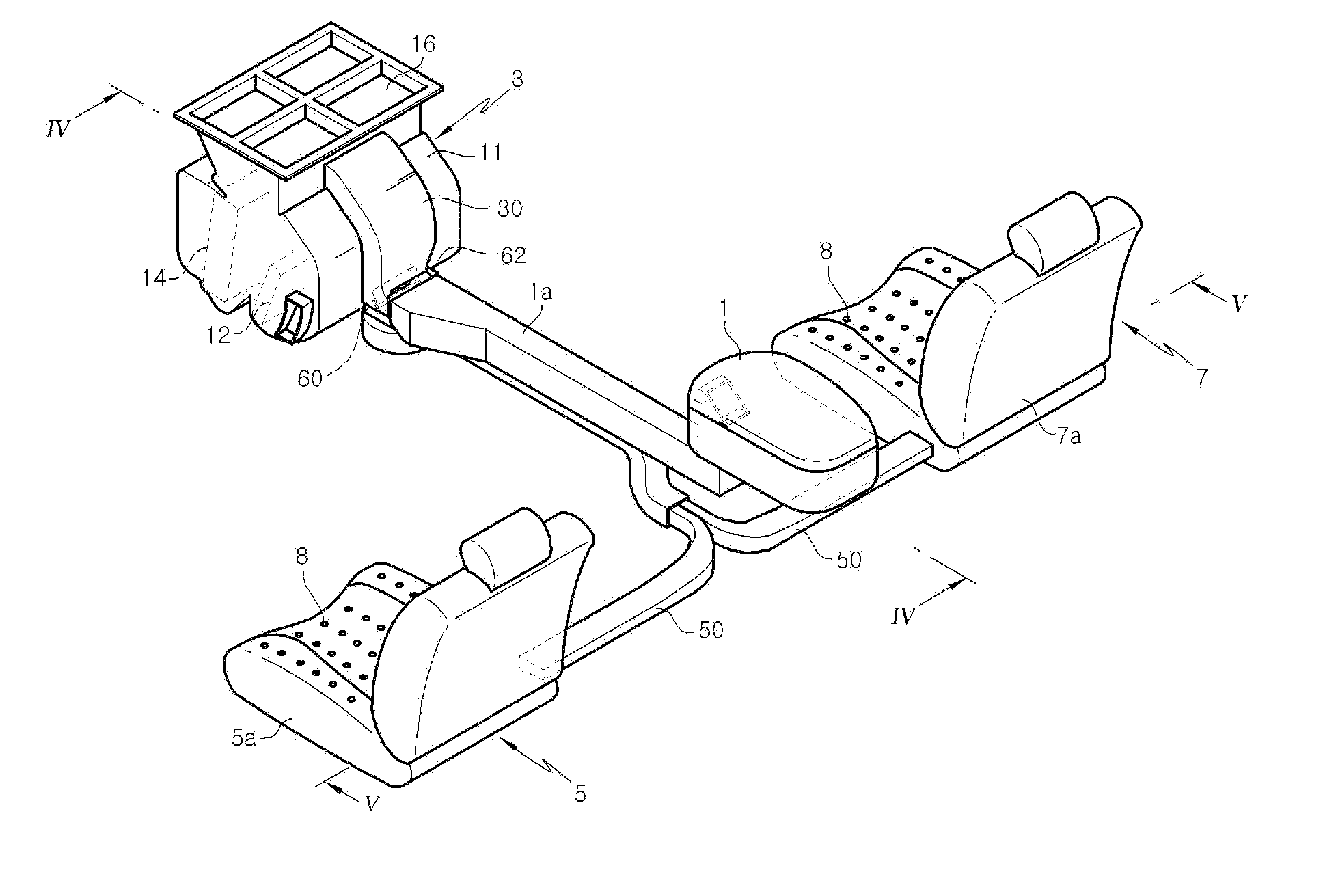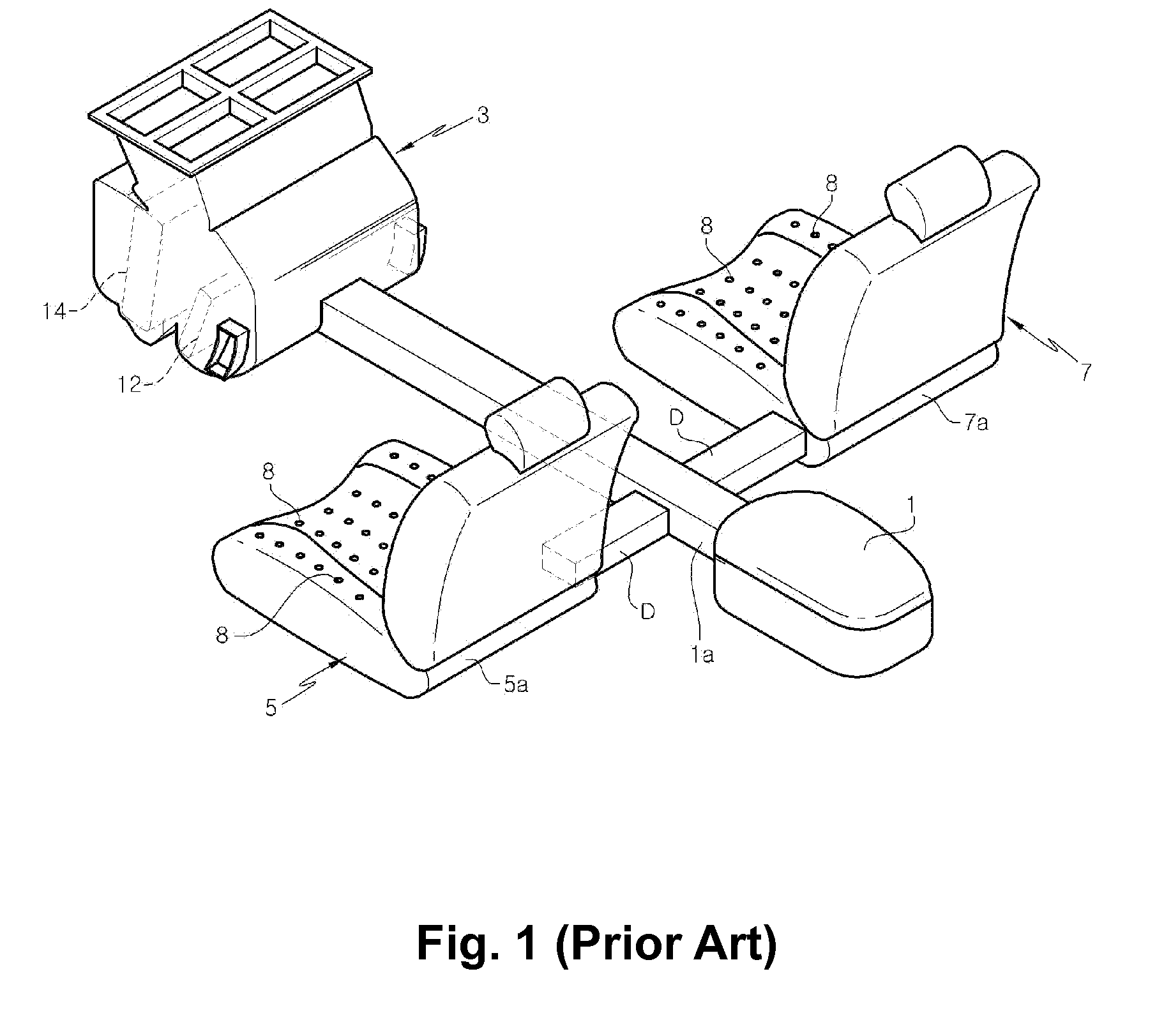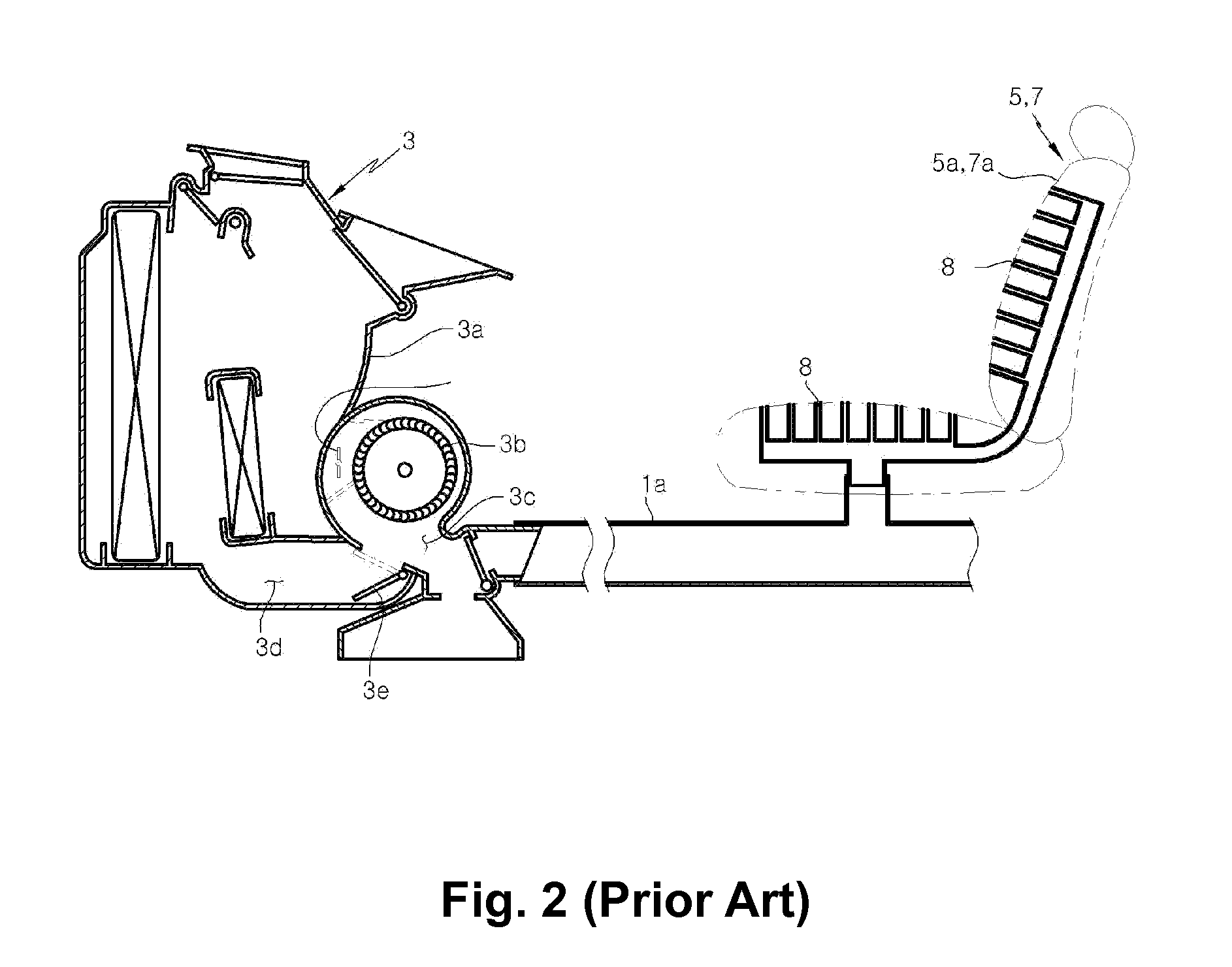Seat-Air Conditioning System for Automotive Vehicles
- Summary
- Abstract
- Description
- Claims
- Application Information
AI Technical Summary
Benefits of technology
Problems solved by technology
Method used
Image
Examples
first embodiment
[0044]FIG. 3 is a bottom perspective view showing a characterizing part of an air conditioning system for automotive vehicles in accordance with the present invention. FIG. 4 is a section view taken along line IV-IV in FIG. 3.
[0045]Prior to describing the seat air-conditioning system of the present invention, brief description will be made on the general aspect of a vehicle air-conditioning system with reference to FIGS. 3 through 5.
[0046]The vehicle air-conditioning system includes an air-conditioning unit 3 provided with an air-conditioning case 11. The air-conditioning case 11 has an internal passage 11a. A heater core 12 and an evaporator 14 are installed within the internal passage 11a.
[0047]The heater core 12 serves to generate a hot air by heating the air present within the internal passage 11a of the air-conditioning case 11. The evaporator 14 functions to generate a cold air by cooling the air present within the internal passage 11a of the air-conditioning case 11.
[0048]Th...
second embodiment
[0075]Referring to FIG. 7, there is shown a seat air-conditioning system in accordance with a second embodiment of the present invention.
[0076]The seat air-conditioning system of the second embodiment includes an outlet duct 30 through which to draw the cold air or the hot air from the air-conditioning case 11. The second outlet mouth 36 of the outlet duct 30 is closed in this seat air-conditioning system. This makes it possible to omit the seat blower 70 otherwise mounted to the second outlet mouth 36. The outlet duct 30 having the closed second outlet mouth 36 is used in an air-conditioning system in which the cold air or the hot air need not be discharged through the second outlet mouth 36, namely an air-conditioning system having no seat cooling or heating performance.
[0077]According to the second embodiment, an air-conditioning system having no seat cooling or heating function can be manufactured by merely using the outlet duct 30 with the closed second outlet mouth 36. This me...
third embodiment
[0080]Referring to FIGS. 8 and 9, there is shown a seat air-conditioning system in accordance with a third embodiment of the present invention.
[0081]In the seat air-conditioning system of the third embodiment, the second outlet mouth 36 is formed in the upper portion of the outlet duct 30, the seat blower 70 being mounted to the second outlet mouth 36. Forming the second outlet mouth 36 in the upper portion of the outlet duct 30 makes it possible to arrange the seat blower 70 in the wide space above the air-conditioning case 11.
[0082]As compared with the seat air-conditioning system of the first embodiment in which the seat blower 70 is arranged in the narrow space below the air-conditioning case 11, it is easy and convenient to attach and remove the seat blower 70. This helps increase the degree of freedom of design and enhance the ease of repair and maintenance.
[0083]It is preferred that the seat blower 70 is mounted to the upper surface portion of the air-conditioning case 11 to ...
PUM
 Login to View More
Login to View More Abstract
Description
Claims
Application Information
 Login to View More
Login to View More - R&D
- Intellectual Property
- Life Sciences
- Materials
- Tech Scout
- Unparalleled Data Quality
- Higher Quality Content
- 60% Fewer Hallucinations
Browse by: Latest US Patents, China's latest patents, Technical Efficacy Thesaurus, Application Domain, Technology Topic, Popular Technical Reports.
© 2025 PatSnap. All rights reserved.Legal|Privacy policy|Modern Slavery Act Transparency Statement|Sitemap|About US| Contact US: help@patsnap.com



